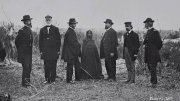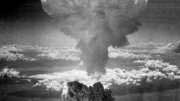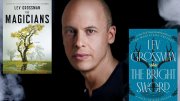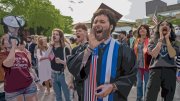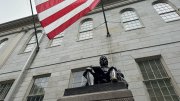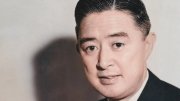The Plunder of Black America: How the Racial Wealth Gap Was Made, by Calvin Schermerhorn, M.T. S. ’00 (Yale, $30). An Arizona State professor of history addresses an abstraction—why so many black American families have negligible net worths—by narrating individual families’ stories of recurrent dispossession: what Frederick Douglass called “plunder.” They proceed vividly from the early slave era through twentieth-century redlining and neighborhood disinvestment to the Great Recession and the devastation associated with subprime lending and foreclosures. “Today,” Schermerhorn writes, “the typical African American household has about one-sixth the wealth of the typical white one. Some 3.5 million Black households have zero or negative wealth, or fewer liquid assets than might be found in a lost wallet.”
Shamanism: The Timeless Religion, by Manvir Singh, Ph.D. ’20 (Knopf, $30). An assistant professor of anthropology at the University of California, Davis, applies cognitive science, evolutionary biology, and fieldwork in Indonesia and the Colombian Amazon to provide an enriched portrait of practices involving altered states (often drug-induced), deprivation, and rites of initiation. Pushing back against stereotypes (that shamanism is “primeval wisdom” or “superstitious savagery”), Singh manages to make less strange “an institution that was here long before us and will survive long after”: a “captivating package of practices and beliefs that appears over and over because of its deep psychological appeal.”
First the Patient: The Life and Times of David G. Nathan, M.D., by Barrett Rollins (Post Hill Press, $18.99 paper). The very definition of an authorized biography (the author, Linde Family professor of medicine, was chief scientific officer at Dana-Farber Cancer Institute, where his subject was president), this book nonetheless matters. Nathan ’51, M.D. ’55, S.D. ’10, is a pioneering scientist and a humane clinician (a rare combination), and an institutionalist who rescued DFCI after a crisis. His story is very much a part of the book’s first sentence: “One of America’s signal accomplishments during the twentieth century was achieving international preeminence in biomedical research.” Nathan’s “Lessons from an Unexpected Life,” his account of one of his patients, who suffers from thalassemia, appeared in these pages in July-August 2009. It and this volume are worth considering at a time when support for such research has unexpectedly come under attack.
A Calculated Restraint: What Allied Leaders Said About the Holocaust, by Richard Breitman, Ph.D. ’75 (Harvard, $35). An emeritus American University historian pieces together the public and private evidence explaining why Allied leaders Winston Churchill, Franklin D. Roosevelt, A.B. 1904, LL.D. ’29, and Joseph Stalin spoke only haltingly, and belatedly, to the wider world about what they knew about the Nazi campaign of exterminating European Jews. It is good, especially now, to understand the political and military exigencies that largely stilled their voices, at a catastrophic moral and human cost.
A Chance to Harmonize, by Sheryl Kaskowitz, Ph.D. ’11 (Pegasus, $29.95). The hitherto untold story of the Music Unit, a New Deal initiative tied to homesteads for those displaced by the Great Depression, describes efforts to record folk songs and bind the new communities of displaced miners, mill workers, and others together with music. Among the surprises is that the initiative was directed by Charles Seeger, A.B. 1908, father of Pete ’40, the dropout who became the country’s foremost folk music champion and practitioner. The author has posted some of the songs on her website.
Wrongs and Rights Come Apart, by Nicolas Cornell ’04, J.D. ’10, Ph.D. ’14 (Harvard, $49.95). A University of Michigan professor of law teases apart the common assumption that wrongs and rights simply mirror one another (that to be wronged is to have one’s rights trampled on). He surveys law, literature, culture, and more to sketch a more complicated, nuanced picture of the obligations people owe to one another. He concludes, “Where we are entitled to tread is a different matter from whether we are answerable for the impact of our steps.”
For guidance on keeping cool in challenging times, consider Beyond Stoicism, by Massimo Pigliucci, Gregory Lopez, and Meredith A. Kunz ’96 (The Experiment, $22.95 paper). The authors, including Kunz, proprietor of the Stoic Mom blog, help readers navigate toward the good life (which can seem almost laughably impossible these days) by “drawing inspiration” from 13 Greek and Roman philosophers, ranging from Aristippus and Epicurus to Hypatia the Neoplatonist. Even if that seems a reach, the times call out for something, right? Failing that, Sharon H. Bergquist, M.D. ’97, urges making a virtue of current challenges, arguing in The Stress Paradox (Harvest, $29.99) that “you need stress to live longer, healthier, and happier” (part of the subtitle). A how-to, grounded in the medical literature, that takes readers beyond common notions about stress and resilience to some surprising places.
Held Together: A Shared Memoir of Motherhood, Medicine, and Imperfect Love, by Rebecca N. Thompson ’96 (HarperOne, $29.99) Having suffered life-threatening pregnancy losses and medical complications, a physician reaches out to other women for their own similar stories. She writes, “They didn’t accept the intolerable assertion we too often foist on the grieving—that everything happens for a reason—but they were making meaning out of everything that had happened,” something that doesn’t happen often enough in the face of disappointing, or dire, medical and health outcomes.
Back from the Brink, by Peter Moskos, Ph.D. ’04 (Oxford, $29.95). The rare Harvard Ph.D. (and Princeton undergraduate alumnus) whose CV also features service on the Baltimore City police force, the author now is a professor of law, police science, and criminal justice administration at John Jay College. He explores the history of the New York Police Department and the changes it wrought that dramatically reduced crime in New York in the 1990s. A work of sociology that is pertinent today—and more likely to contribute to solving real problems than any political law-and-order rhetoric on the subject.
Shadows into Light: A Generation of Former Child Soldiers Comes of Age, by Theresa S. Betancourt, Sc.D. ’03 (Harvard, $35). The author, of Boston College’s School of Social Work, delves deep into the horrific abuse of children impressed into Sierra Leone’s late-twentieth-century civil war to find hopeful signs of recovery from some of the worst things humans can do to one another.
For the cubicle set: The World Is Your Office, by Prithwiraj Choudhury (Harvard Business Review Press, $32). The Lumry Family associate professor of business administration studies the “changing geography of work,” including geographic mobility, working from home, and other arrangements. With lots of conventional employers bringing their staffs back to conventional offices, this examination of the recruiting, productivity, and retention effects of “work from anywhere” practices (which he advocates) merits attention, lest the lessons of the pandemic are frittered away. And The Win-Win Workplace, by Angela Jackson, Ed.L.D. ’19 (Berrett-Koehler, $29.95), draws on labor-market research to quantify “how thriving employees drive bottom-line success,” including guidance on achieving that nirvana via rethinking employee benefits, activating frontline leaders, rethinking credentials, and more. If (when?) the economy tanks, both books’ lessons may become even more applicable.
The Girl in the Middle: A Recovered History of the American West, by Martha A. Sandweiss ’75 (Princeton, $32). The author, an emerita Princeton historian and founder of the Princeton & Slavery Project, melds her expertise in the American West, photography, and more to interpret a haunting 1868 Alexander Gardner image of six federal peace commissioners, charged with negotiating a treaty with the Lakota and other Northern Plains tribes, and an unidentified girl. Her investigations yield a wealth of insights into Reconstruction, westward expansion, and the lasting legacy of this country’s treatment of its Indigenous peoples. Recovering the girl’s identity indeed, as Sandweiss writes, “changes everything.”
The Girl Who Baptized Herself, by Meggan Watterson, M.T.S. ’01 (Random House, $31). A feminist theologian explores the 70 C.E. scripture The Acts of Paul and Thecla, finding within it “a lost gospel for finding our own source of power within—a power that allows us to know who we are and to make choices for our lives based on that knowing.”
Brain and Heart: The Triumphs and Struggles of a Pediatric Neurosurgeon, by David I. Sandberg ’93 (Pegasus, $27.95). Surgeons are made of different stuff. Lest you forget, the first lines of the memoir by this University of Texas Health Science Center at Houston practitioner is a brisk reminder: “I remember the very first moment I saw and touched a human brain. The exhilaration of opening up a skull and seeing the brain pulsating with every heartbeat is hard to describe.” It would be good if he found a richer way to describe the sensation than writing that the experience “blew me away.”
Christo and Jeanne-Claude: On the Way to the Gates, Central Park, New York City, by Jonathan Fineberg ’67, Ph.D. ’75 (Yale, $65). A twentieth-anniversary edition of the wonderfully illustrated, catalog-format book documenting the playful, uplifting, and memorable public work that transformed Central Park and the way people saw and remembered it. Fineberg, who has long documented the shape-shifting works by Christo and Jeanne-Claude (Surrounded Islands, Miami; Wrapped Reichstag; etc.), updates his coverage since The Gates, including a further valuable interview. A visual treat.
